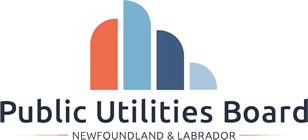|
|||||||||
| Home - Petroleum Products - Questions and Answers | ||
Question: 14 When fuel-price regulation was first established in Newfoundland and Labrador the province was divided into different pricing zones to account for the costs of getting fuel products from the primary supply point to a particular region. These costs vary depending on how far the zone is from the primary supply and include factors such as delivery method (i.e. ferry delivery, marine tanker, drum delivery), storage, tractor trailer/tank wagon costs, and the volume of sales/product turnover. Generally, the further away a zone is from its primary supply the higher the cost of getting product to that zone. Establishing maximum prices that reflect the costs to supply each zone helps to ensure that all areas of the province have continued access to fuel. A single maximum price for the entire province would tend to increase maximum prices in some zones and decrease maximum prices in other zones as the price would reflect the average cost of supply. As there is no requirement for fuel suppliers to sell or deliver product, a supplier may discontinue operations in an area if the cost of supply cannot be recovered. As a result some areas of the province may be cut off from fuel deliveries. |
Navigation Menu |
|
